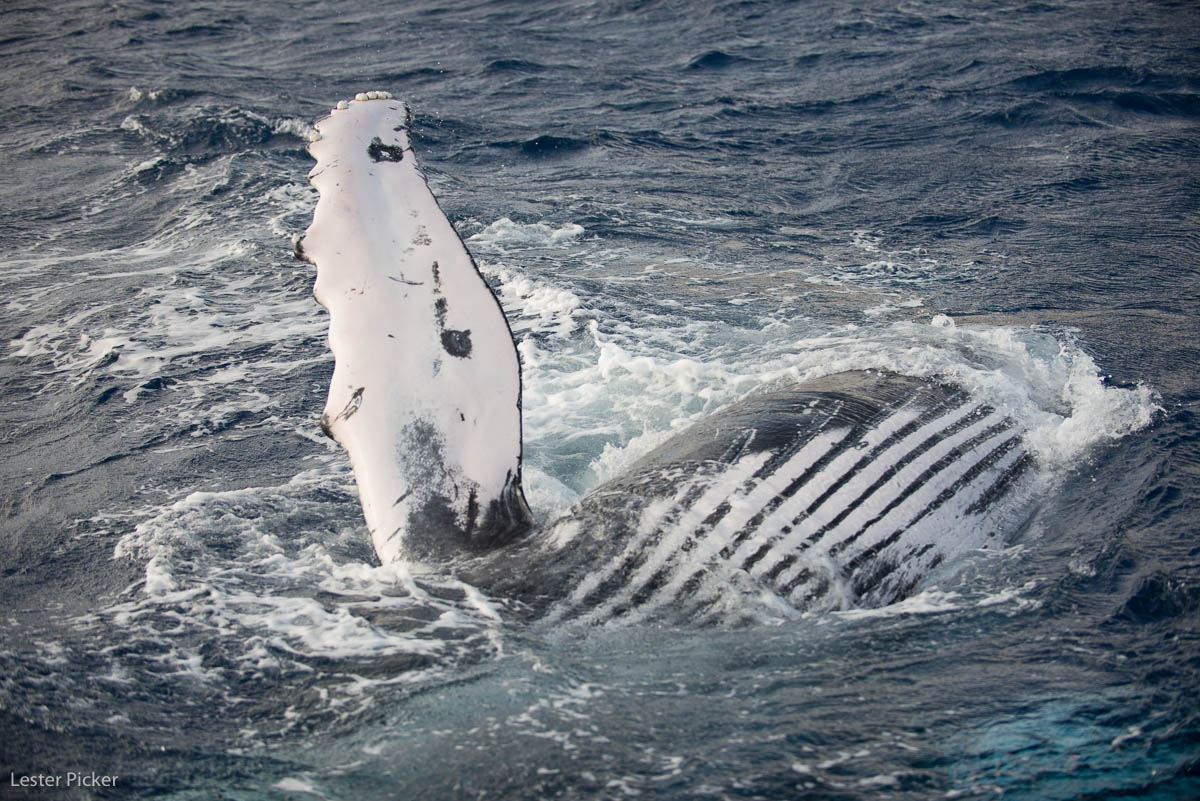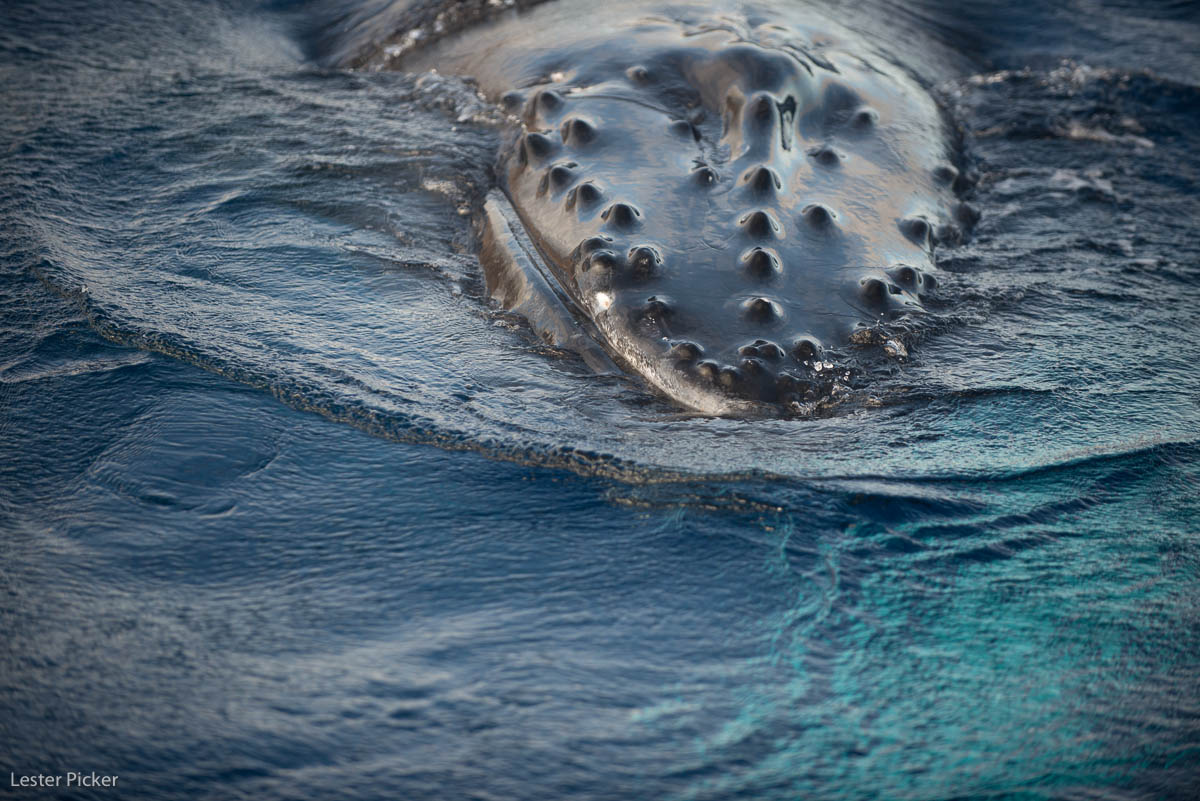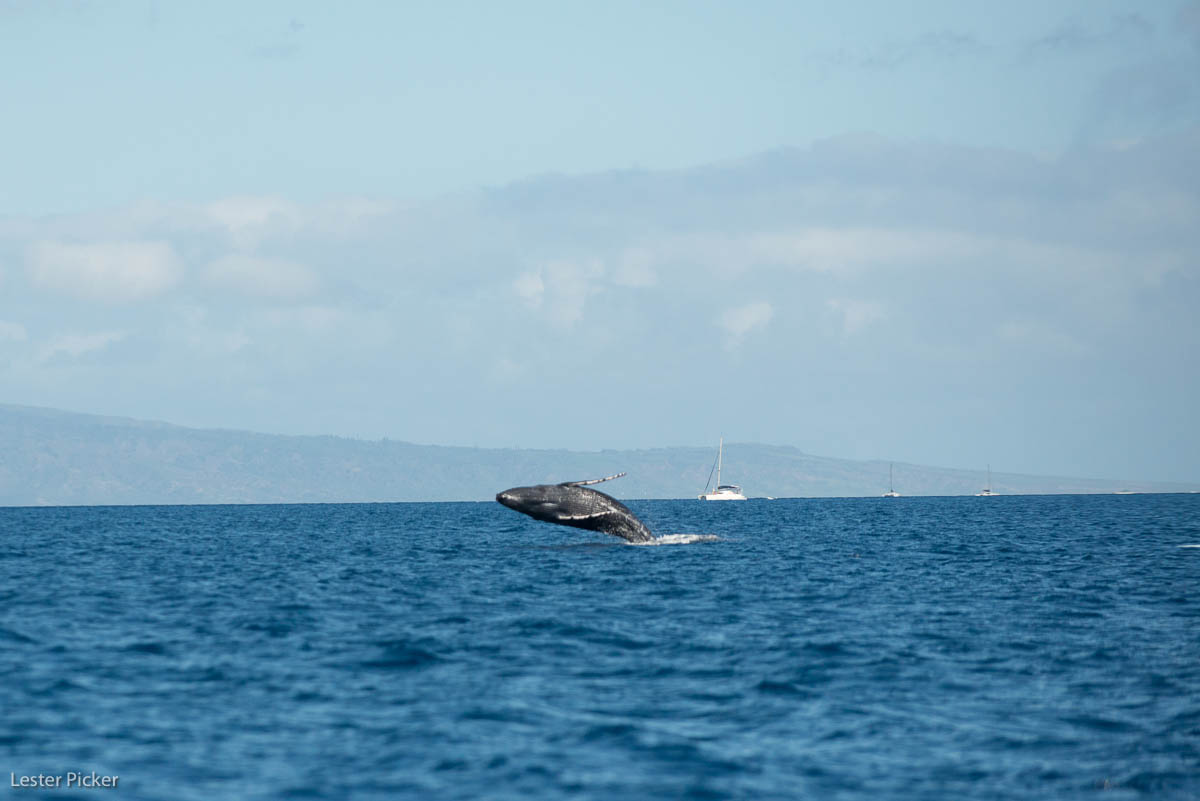
Having a Whale of a Time
Maui, Hawaii in February can mean only one thing- the whales are in town. Specifically, this is the time that thousands of humpbacks are in full force in Maui, frolicking in the protected area between Maui and the nearby islands of Lanai and Molokai (as well as others). And what a sight they are to behold.
Stand on any beach from Kapalua to Wailea for more than five minutes and if you don’t see at least a dozen blows, fin slaps, and breeches you are facing away from the ocean. This federally protected area is where humpbacks come to birth calves or to breed for next year’s arrival. These whales, the size of a school bus (up to fifty feet in length) do not eat while they are here for up to five months. Instead they live on their body fat and can lose up to a third of their weight while they are here.

Females form pods that protect any young within their care. Nearby groups of males will stage competition “battles” of pectoral fin and tail slaps, lunges and breeches to declare themselves king of the pack and desirable for nearby females. If they had a talent agent we’d be watching “Whales Gone Wild” on cable.
Every day, from sunrise to sunset, the whale tourism industry here in Maui caters to thousands of tourists who simply want to see these majestic animals in their breeding home. Perhaps the best known, and whose boats I use, is the Pacific Whale Foundation. They are a nonprofit whose funding goes to support whale research and educational programs. Hats off to them for the wonderful job they do educating us all on the glories and challenges of these magnificent creatures.
My first two trips were learning experiences for me, as I tried out a new setup. One of the trips was on an inflatable dinghy and ocean conditions made it difficult to photograph. Think of the fact that the vessel is pitching, rolling and yawing, the whales are moving, the wind is blowing and you’ve got to place an autofocus sensor dot on a creature 100 or more yards away (I am experimenting with other focus techniques, but my training keeps pulling me back to spot focus). I can’t say I’m happy with the results so far, but I have two more cruises left this year.

In any event, here is my setup: Nikon D800 with either a 200-400mm or 70-200 lens. I mount the 200-400 on a monopod and hand-hold the 70-200. Depending on the light I am shooting at ISO 400 or 800 so I can have a minimum shutter speed of 1/1000 second. I shoot with an exposure adjustment of +2/3 stop so that the black body of the whales will not render totally featureless. I will sometimes use a 1.4x tele-extender, but I don’t like to do that because it restricts my vision and I miss too many shots. I’d rather wait until the captain pulls the boat closer (but boats here are restricted to 100 yards). Needless to say, this is not the situation to use filters.
I’m offering this not as a whale photography expert, but as a starting point for those of you just getting into it. There is one more issue I plan to talk about with whale photography, but I’ll have to wait until next week when my last two cruises are done. Stay tuned!